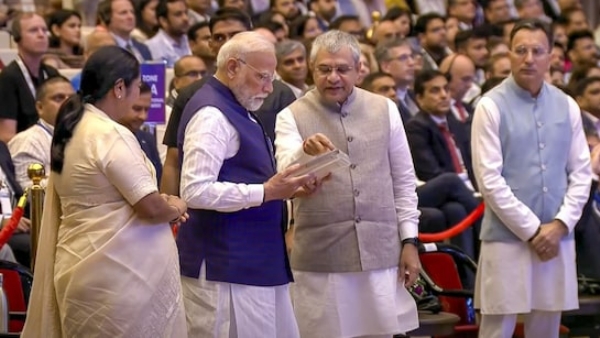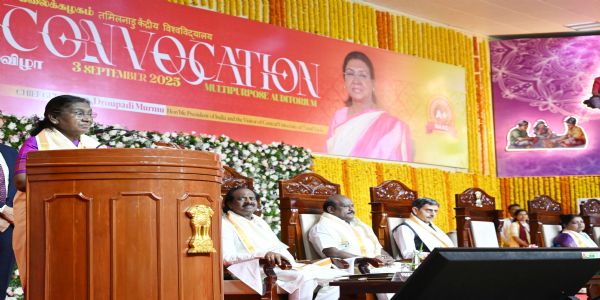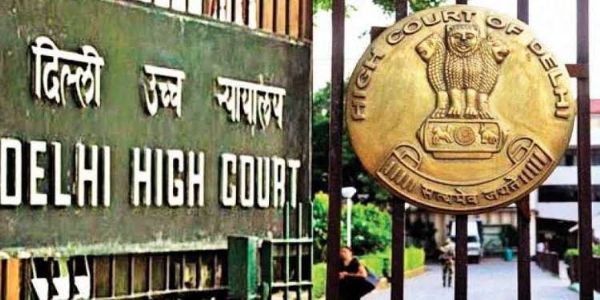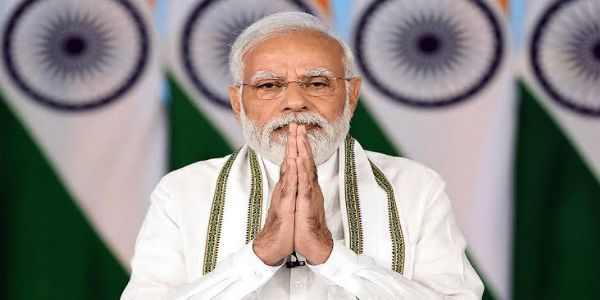

Delhi, 2 September (H.S.): Prime Minister Narendra Modi inaugurated ‘Semicon India 2025’ at Yashobhoomi in New Delhi, marking a significant milestone in India’s journey to becoming a global semiconductor hub. Addressing a diverse audience of industry leaders, entrepreneurs, and students from across the country and around the world, he highlighted India’s rising role in the semiconductor ecosystem and the immense potential this sector holds for the nation and the world.
The Prime Minister opened by sharing his recent visits to Japan and China, recalling a visit to the Tokyo Electron factory with Japan’s Prime Minister. His passion for technology, which naturally draws him to such events, was evident as he expressed immense joy in addressing an assembly filled with hope and ambition. With over 40 countries represented, including semiconductor CEOs and experts, the event underscores the global confidence in India’s capabilities and youth-driven innovation. Modi emphasized, “The world trusts India, believes in India, and is ready to build the semiconductor future with India.”
He took pride in India’s robust economic growth, pointing out that despite global economic uncertainties, India’s GDP grew by 7.8% in the first quarter, outperforming expectations. This growth spans manufacturing, services, agriculture, and construction, igniting enthusiasm and energy in every sector. Modi confidently predicted that India is rapidly on track to become the world’s third-largest economy.
Turning to the semiconductor industry, the Prime Minister eloquently described chips as the “digital diamonds” of the 21st century—tiny yet revolutionary components set to redefine global progress. While oil was the driving resource of the last century, today’s power lies in these small, powerful chips. Highlighting the rapid expansion of the semiconductor market, currently valued at $600 billion and expected to surpass $1 trillion soon, Modi assured that India will secure an important share in this booming sector.
Since the launch of the Semicon India programme in 2021, India has moved swiftly—approving its first semiconductor plant in 2023, multiple projects in 2024, and five new projects in 2025. Currently, ten semiconductor projects are underway with investments exceeding $18 billion (more than ₹1.5 lakh crore). This reflects mounting global trust in India’s potential. Modi noted the critical importance of speed in this sector, stressing that streamlined processes, reduced paperwork, and the National Single Window System have accelerated approvals and investment flows.
The Prime Minister detailed how India is building semiconductor parks across the country with plug-and-play infrastructure, including land, power, connectivity, and a skilled workforce, all designed to attract and support industry growth. Incentives like Production Linked Incentives (PLI) and Design Linked Grants are fueling this surge, helping India transition from backend operations towards becoming a full-stack semiconductor powerhouse.
India’s success is already visible with CG Power’s pilot plant running since August 28 and Kaynes’ plant about to start. Test chips from Micron and Tata are in production, and commercial chip manufacturing is set to begin this year, underscoring India’s rapid progress.
Modi emphasized that India’s semiconductor story is comprehensive, spanning design, manufacturing, packaging, and advanced devices. The Semiconductor Mission is more than building fabs; it’s about creating a holistic ecosystem that makes India self-reliant and globally competitive. India is also keeping pace with the world’s latest technologies, developing chips capable of powering immersive 21st-century technologies at design hubs in Noida and Bengaluru.
Addressing global challenges, the Prime Minister highlighted India’s focus on building a strong foundation with critical minerals through the National Critical Mineral Mission to support domestic demand. He expressed confidence in India’s progress in this area over the past four years.
Modi also underscored the vital role of startups, MSMEs, and youth in this journey. India contributes 20% of the world’s semiconductor design talent, with its youth forming the largest human capital pool for the industry. He called on young innovators and entrepreneurs to seize opportunities under flagship initiatives like the Design Linked Incentive Scheme and the Chips-to-Startup Programme, assuring them of government support and a commitment to developing Indian intellectual property.
Several states are actively participating, creating conducive policies and infrastructure, fostering healthy competition for investments and ecosystem growth.
The Prime Minister concluded by affirming the government’s commitment to continuous reforms under the mantra of “Reform, Perform, and Transform,” with a next phase of semiconductor reforms underway. He encouraged investors to capitalize on India’s readiness, saying, “Design is ready. Mask is aligned. Now is the time for precision execution and delivery at scale.” Modi reiterated that India’s policies represent long-term commitments to meet every investor’s needs.
In his closing, Modi envisioned a future where the world proudly says: “Designed in India, Made in India, Trusted by the World.” He wished that every bit of India’s semiconductor efforts succeeds, drives innovation, and powers a high-performance future.
The event was attended by Union Ministers Shri Ashwini Vaishnaw, Shri Jitin Prasada, Chief Ministers of Delhi and Odisha, among other dignitaries, highlighting the broad governmental support behind this transformative sector.
Semicon India 2025 is a three-day conference (September 2–4) focusing on building a resilient, sustainable semiconductor ecosystem in India. It features discussions on semiconductor fab and packaging projects, infrastructure readiness, smart manufacturing, R&D, artificial intelligence, investment, state policies, and international cooperation. The event attracts over 20,750 attendees from 48 countries, including 150+ speakers and 350+ exhibitors, with special sessions on workforce development and startups.
This landmark event signals India’s bold leap into a semiconductor future powered by innovation, collaboration, and unyielding ambition. It reflects the nation’s readiness to shape global technology landscapes in the decades to come.
---------------
Hindusthan Samachar / Jun Sarkar







